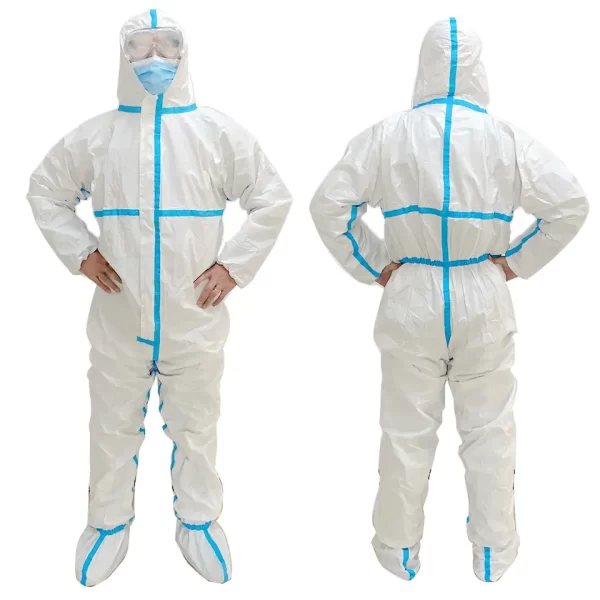Evolution of Medical Coveralls: Traversing the Journey from Basics to Advanced Protection
In the world of healthcare, medical coveralls play a pivotal role. They function as a protective shield for healthcare workers who are constantly at the frontline of battles against infectious diseases. From their humble beginnings as basic garments to their transformation into technologically advanced protective gear, medical coveralls have witnessed a significant evolution over time. This article delves deeper into this journey, shedding light on the transformation of these coveralls and how they’ve revolutionized the healthcare industry.
Early Beginnings
The concept of medical coveralls has its roots in the late 19th and early 20th centuries when healthcare workers needed a protective layer to keep their clothing clean during medical procedures. These coveralls were essentially simple one-piece garments, typically made of cotton or other natural fibers. They were not particularly designed to prevent the spread of infections but were more focused on providing a basic physical barrier and maintaining cleanliness.
Despite their limited functionality, these early medical coveralls were a major breakthrough for the healthcare industry. They provided healthcare professionals with a tool to avoid direct contact with blood, body fluids, and other potential contaminants. But as the field of medicine evolved and the threat from infectious diseases grew, it became apparent that these basic coveralls were not enough. The need for more advanced protective gear became increasingly clear.
The Push for Innovation
The shift from rudimentary coveralls to advanced personal protective equipment (PPE) has been primarily driven by the growing need for effective infection control and prevention. Outbreaks of diseases such as Severe Acute Respiratory Syndrome (SARS), Ebola, and more recently, COVID-19 have necessitated the development of improved medical coveralls.
In response to these challenges, the 21st century has witnessed significant advancements in the design and manufacturing of medical coveralls. The focus moved beyond just cleanliness, turning toward enhanced protection and comfort for healthcare workers.
Material Science Breakthroughs
With the advent of materials science, medical coveralls underwent a transformation. Traditional fabrics gave way to non-woven materials like polypropylene, which offered superior barrier protection. These non-woven materials provided a better defense against blood, body fluids, and other potentially infectious materials, reducing the risk of disease transmission.
Disposable medical coveralls made from these advanced materials began to flood the market. Designed to be lightweight and breathable, they provided improved comfort for healthcare workers, a factor of paramount importance considering the long hours these professionals often work.
Antimicrobial Advancements
Technology also allowed the integration of antimicrobial properties into the fabric of the coveralls. This key development resulted in medical coveralls that could not only block physical contact with pathogens but also actively kill or inhibit their growth.
Nanotechnology, for instance, played a significant role in this regard. It enabled the creation of nanoparticles that could be embedded into the fibers of the coveralls, creating an additional layer of protection. As these particles come into contact with pathogens, they disrupt the pathogens’ functions, reducing their ability to spread and cause infections.
Design Innovations
As technology continued to evolve, so did the design of medical coveralls. The simple, single-piece garments of the past gradually gave way to more sophisticated designs. Modern medical coveralls now incorporate features like elastic wrists and ankles, waist ties, and hood and boot covers to provide comprehensive protection. These design enhancements were informed by the understanding of disease transmission routes and aimed at minimizing potential exposure points.
Moreover, some coverall designs started to include built-in face shields or respirators, offering a comprehensive all-in-one solution for PPE. These design innovations highlighted the industry’s commitment to enhancing healthcare workers’ protection in an increasingly challenging work environment.
Advanced Protection and Smart Coveralls
The cutting-edge of medical coverall technology points toward ‘intelligent’ or ‘smart’ medical coveralls. These advanced coveralls could come with sensors to monitor the wearer’s vital signs, potentially providing real-time health data and alerting healthcare professionals of any anomalies.
Moreover, self-cleaning or self-decontaminating capabilities are also on the horizon. Such features could dramatically improve hygiene standards and reduce the risk of cross-contamination, providing a new level of security for healthcare workers.
The Future of Medical Coveralls
As the world continues to grapple with infectious diseases, the evolution of medical coveralls will not stop here. The advancements in technology and a heightened understanding of infectious disease transmission promise more leaps in innovation.
The future may bring medical coveralls that are not only more protective and comfortable but also more sustainable. As the global community becomes more conscious of environmental impacts, the development of eco-friendly, biodegradable or recyclable medical coveralls could be the next frontier in this industry.
Conclusion
In conclusion, the evolution of medical coveralls is a testament to the power of innovation in the face of adversity. From simple garments designed to keep clothing clean to technologically advanced personal protective gear, medical coveralls have come a long way. As we continue to face new health challenges, we can rest assured knowing that our frontline workers are protected by equipment that continually evolves and improves.
Please visit our website for more product details https://medposnonwoven.com/product/microporous-medical-coverall/

